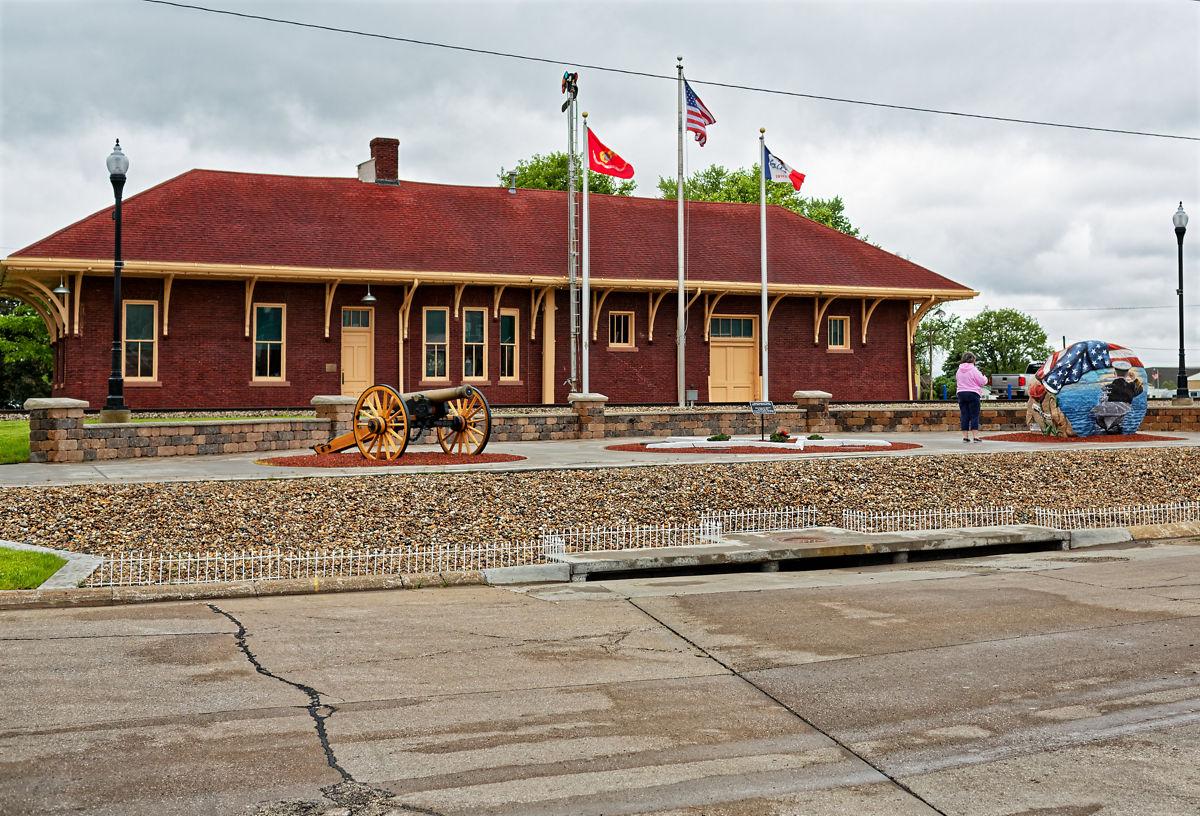
The Muscatine County Freedom Rock in Wilton, Iowa was completed in June of 2020 with its dedication was held on September 6, 2020.
Just like every county, Muscatine County is rich with vivd and interesting Veteran's stories from all eras. Though it can be a bit tough to sort through and find stories to illustrate, I think we have an interesting mural here.
Rear Adm. Will Pennington is a native of Wilton, Iowa. He graduated from the U. S. Naval Academy in 1989 with a Bachelor of Science in Economics. Most recently, he served as commanding officer of USS George H.W. Bush (CVN 77) and completed a record setting combat deployment for which the crew was recognized with the Atlantic Fleet Battle ‘E’, the Jig Dog Ramage Award for excellence in integrated carrier air wing operations, the Flatley Memorial Safety Award, and the Chief of Naval Operations Award for Excellence in Environmental Stewardship. I chose to illustrate the Rear Admiral Saluting the flag as he blends down into the USS George HW Bush aircraft carrier.
Arthur James Latchaw was the nose gunner on a B-24 four-engine “Liberator” bomber when he was shot down over Hungary. Here are some excerpts of his personal account. On bailing out of the plane--"The shock of the parachute opening (or lack of oxygen) may have jolted me unconscious for a few moments because I don’t remember seeing the chute or risers unfold – I just know that I next became aware of floating under the chute with the ground rising quickly under me. I struck the ground on a rocky hillside, rolled and braced myself to collapse the chute, and stood up to take stock of my situation." On marching as a POW -- "After a couple days we were advised that we were to march under guard to a prison camp at Moosberg, near Munich. Persons who were sick or severely injured were to be transported by train and the rest of us were to walk. Although my knees still troubled me, I was afraid to take the train because (1) I thought the Germans may decide we simply were too much trouble to bother with and execute us, or (2) we may more easily be seen and attacked by allied aircraft. Therefore, I walked." There were many ways to attempt to illustrate this story I chose an up-close shot of a nose gunner firing amidst a dogfight.
Rolland J. Claussen earned the Silver Star in action against enemy Japanese forces on Iwo Jima (where the "Raising of the Flag" iconic picture was taken). His citation reads: When heavy fire from two enemy machine guns were holding up the advance of his platoon with grenades and small arms fire had failed, Private First Class Claussen voluntarily advanced alone in the face of the hostile fire, outflanked the Japanese machine gunners and force them to withdraw to a cave. Obtaining a flame thrower, he then proceeded to the cave under enemy fire, assaulted it and annihilated the occupants. After reading this, it's obvious I chose to illustrate Claussen with the flame thrower and Silver Star.
On the the skinny side of the rock, we chose to portray poppies. The poppy of wartime remembrance is Papaver rhoeas, the red-flowered corn poppy. This poppy is a common plant of disturbed ground in Europe and is found in many locations, including Flanders, which is the setting of the famous poem "In Flanders Fields" by the Canadian surgeon and soldier John McCrae. Wearing of poppies has been a custom since 1924 in the United States. Miss Moina Michael of Georgia is credited as the founder of the Memorial Poppy in the United States.
Of course, Old Glory unfurls over the top, representing not only all Veterans... but all Americans.
Copyright ©
2024
by The Candy Kitchen. All rights reserved.